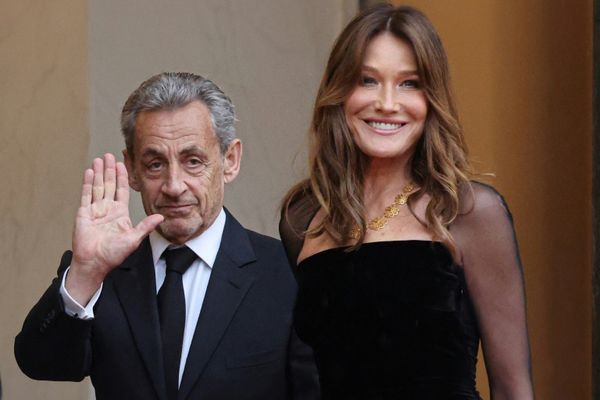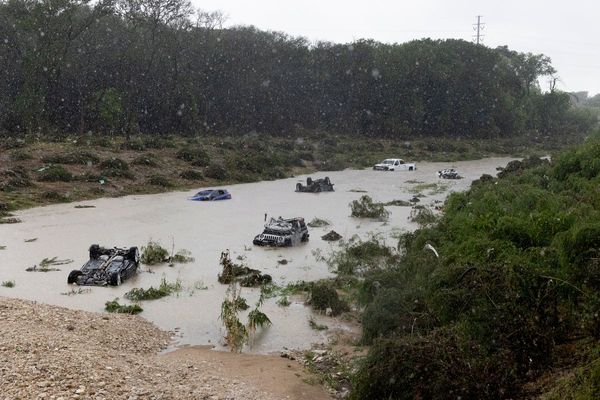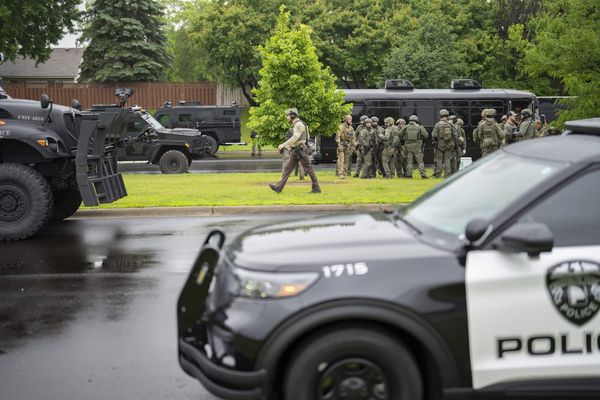
More than 200 Israeli jets were involved in initial air raids on at least 100 targets in Iran in five waves of strikes, including at the key Natanz nuclear site as well as at ballistic missile sites. Israel also killed at least nine senior Iranian nuclear scientists and a number of senior Iranian officials, including its most senior military officer and the head of the Revolutionary Guards.
Dozens of sites appear to have been attacked in the widening campaign, including in Tehran, Shiraz and Tabriz, and reportedly in Isfahan and Kermanshah.
What nuclear sites were attacked?
The International Atomic Energy Agency has confirmed strikes at the Natanz nuclear site about 135 miles south-east of Tehran, Iran’s most significant nuclear enrichment site, that began at just after 4am local time (0130 BST) on Friday.
Video footage posted online appeared to show the aftermath of explosions.
Protected by heavy concrete walls, Natanz’s centrifuge facilities are underground and the site has been targeted for sabotage operations on multiple locations. Construction work had been under way to expand the site.
Natanz is where Iran has produced much of its nuclear fuel – including a stockpile of highly enriched uranium that the west has suggested could be used in a future nuclear weapon.
Satellite imagery showed significant damage to two areas of the site: its electrical substation that powers it, and the above-ground pilot fuel enrichment plant, which hosts hundreds of centrifuges.
Fuel Enrichment Plant, which is equipped with about 15,000 centrifuges appeared so far to be undamaged. The IAEA said there had been no reported nuclear contamination.
The IAEA’s chief, Rafael Grossi, told an emergency meeting of the UN security council on Friday that there appeared to be no indication of damage to the underground section of the plant.
As the Israeli offensive entered its second day, reports suggested that Israel had hit the area of the nuclear fuel enrichment facility at Fordow, which is deeply buried underneath a mountain, causing limited damage. Israel is not believed to have the type of earth-penetrating bombs required to blow up the mountain and crack open the nuclear facility inside. A nuclear research centre in Isfahan was also hit.
What else was hit?
Reports suggest Bid Kaneh, which houses several missile development and production sites, was hit on Friday morning as well as the air defence systems in western Iran.
Iran has confirmed a number of senior military figures and scientists were assassinated, some in strikes on private residences, pointing to a military operation going far beyond Israel’s stated intention of preventing Tehran crossing the threshold for acquiring a nuclear weapon.
Iran has also accused Israel of hitting civilian areas during its assassination attempts including a claim that 60 people were killed in a strike on a residential building in the Farahzad area of Tehran.
Israel’s military said on Saturday it had targeted both surface-to-surface missile launchers used to strike Israel ands surface-to-air missile infrastructure used to defend Tehran.
Among those killed were the chief of staff of Iran’s armed forces, Maj Gen Mohammad Bagheri, and the commander of the Islamic Revolutionary Guard Corps (IRGC), Gen Hossein Salami, suggesting a broader “decapitation” strike aimed at weakening the Iranian regime.
The Israeli prime minister, Benjamin Netanyahu, expressed hope the attacks would trigger the downfall of Iran’s theocracy, saying his message to the Iranian people was that Israel’s fight was not with them, but with the “brutal dictatorship that has oppressed you for 46 years”.
As of Saturday morning strikes had been reported at Parchin military base, jet fighter hangar at Mehrabad airport.
Who were Salami and Bagheri?
Both officers were closely associated with the centres of power in Iran’s security hierarchy, having risen through the ranks after the Iranian revolution in 1979.
Salami began his career in the IRGC in 1980 during the Iran-Iraq war, becoming deputy commander in 2009 then, a decade later, commander of the 125,000-strong force that has played a key role in Iran’s forward foreign policy in the region. Salami had been sanctioned by the UN and US for his involvement in Iran’s nuclear and military programmes.
“If you make the slightest mistake, we will open the gates of hell for you,” Salami warned Tehran’s foes during a tour of an underground missile base in January.
Bagheri, who was in his early 60s, had also risen through the IRGC, like Salami fighting in the Iran-Iraq war with a background in military intelligence before being appointed chief of staff of the Armed Forces of the Islamic Republic of Iran – the country’s highest military position – in 2016. His position made him, formally at least, the second most powerful figure in Iran after the supreme leader, Ayatollah Ali Khamenei.
Some press reports have suggested Bagheri was one of the revolutionary students that seized the US embassy in 1979. Gholamali Rashid, the deputy commander in chief of the armed forces, was also reported as having been killed.
It was reported that Ali Shamkhani, a key adviser to and confidant of Khamenei, was killed in a strike on an apartment block in Tehran, as well as the head of the IRGC’s air force and a number of his senior aides.
Who were the scientists killed?
According to the nuclear weapons expert David Albright, Israel’s strategy appears to be to “destroy the brains” behind the programme and “as much equipment as possible” adding that Israel had potentially done a “tremendous amount of damage” to Iran’s nuclear programme.
Israel has a history of targeting Iranian nuclear scientists, and this attack was no exception with at least six scientists killed on Friday with three more killed on Saturday.
The Tasnim news agency named the six scientists killed on Friday, including Mohammad Mehdi Tehranchi, a theoretical physicist who was the president of the Islamic Azad University of Iran.
Also killed was Fereydoun Abbasi, a former head of the Atomic Energy Organization of Iran. Tasnim additionally named Abdolhamid Minouchehr, Ahmadreza Zolfaghari, Amirhossein Feqhi, Motalleblizadeh, as other scientists killed. Iranian state television named the three killed on Saturday as Ali Bekaei Karimi, Mansour Asgari, and Saeed Borji.







